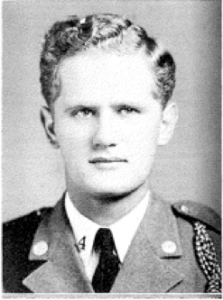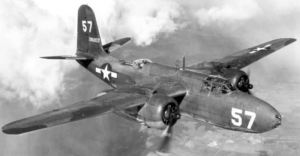Scroll of Honor – Gus Groce
Accidents
Written by Kelly Durham
By the beginning of his senior year, Gus Groce must have known  that his choices about how he would spend his immediate future were limited. If he was lucky, he might get to pick the color he would wear, but he would almost certainly be wearing a uniform of the United States military.
that his choices about how he would spend his immediate future were limited. If he was lucky, he might get to pick the color he would wear, but he would almost certainly be wearing a uniform of the United States military.
Lethco Augustus Groce, Jr. of Lyman was a member of Clemson College’s Class of 1941. Gus was an architecture major, an honor student and a member of Minaret, the architecture honor fraternity on campus. Although serving his senior year as a cadet private, Gus had demonstrated military aptitude, having been selected as the best drilled sergeant in his battalion during his junior year and having marched with the Pershing Rifles drill team and the Sophomore, Junior and Senior Platoons. In addition, like so many of his classmates, Gus had completed ROTC summer training at Fort McClellan, Alabama where he had qualified as a marksman on the rifle range. He was a young man of varied talents, displaying interests in music and art as well. Following his graduation, Gus was commissioned and then transferred from the infantry into the Army Air Forces.
Scrambling to prepare America to face the perils threatening from Europe and in the Pacific, Army chief of staff George Marshall and Army Air Forces chief Hap Arnold had embarked on an unprecedented peacetime expansion of the Army, to include its air arm. When the war in Europe started in September 1939, the Army Air Corps consisted of only eight hundred first-line combat aircraft and less than 25,000 personnel. By the time Gus Groce earned his pilot’s wings at Valdosta, Georgia, the Army Air Forces was in the midst of an expansion that would carry it to more than 2.4 million members and nearly 80,000 aircraft.
Tens of thousands of young men had to be taught to  pilot the most complex aircraft of the day and they had to be taught quickly. Young men, many of them on their own for the first time, combined with the pressures of war, rigid military organizations, complicated equipment and accelerated training regimens, invariably led to accidents.
pilot the most complex aircraft of the day and they had to be taught quickly. Young men, many of them on their own for the first time, combined with the pressures of war, rigid military organizations, complicated equipment and accelerated training regimens, invariably led to accidents.
Gus Groce had been assigned to the 16th Bomb Squadron at Hattiesburg Air Base in Mississippi. The 16th was training on the A-20 Havoc, a twin-engine light bomber. Part of the training called for formation flying.
On Saturday, September 5, 1942, Gus was dispatched as the copilot in an A-20 piloted by Second Lieutenant George Pritchard. Sergeants George Kaiser and Floyd Lones rounded out the crew. Their aircraft would be flying in a two-ship formation with another A-20 piloted by Lieutenant Lawrence Bever. About 1400 hours, approximately seven miles north of New Augusta, Mississippi, the left wing of Bever’s aircraft struck Gus’s airplane, tearing away the right elevator and the horizontal stabilizer and rendering the aircraft uncontrollable. Gus’s airplane went into a spin and crashed killing all aboard. Bever’s aircraft was able to return to base, but was significantly damaged.
The accident that claimed the lives of Groce, Pritchard,  Kaiser and Lones was one of thirty-nine involving stateside Army Air Forces’ aircraft that day. Five of these including fatalities. For that first week of September 1942, the Army Air Forces averaged more than thirty-six accidents per day, most of them relatively minor—but not all. On average, nearly five accidents per day resulted in fatalities.
Kaiser and Lones was one of thirty-nine involving stateside Army Air Forces’ aircraft that day. Five of these including fatalities. For that first week of September 1942, the Army Air Forces averaged more than thirty-six accidents per day, most of them relatively minor—but not all. On average, nearly five accidents per day resulted in fatalities.
Such was the cruel arithmetic of America’s rapid military build-up, an expansion that would, along with American industrial production, sound the death knell for the Axis dictators and result in an Allied victory three years later.
Lethco Augustus Groce, Jr. is buried at the Wellford Baptist Church Cemetery.
For more information about Second Lieutenant Lethco Augustus Groce, Jr., see:
http://soh.alumni.clemson.edu/scroll/lethco-augustus-groce-jr/
For additional information about Clemson University’s Scroll of Honor see:
http://soh.alumni.clemson.edu/
http://www.aviationarchaeology.com/src/AARmonthly/Sep1942S.htm
